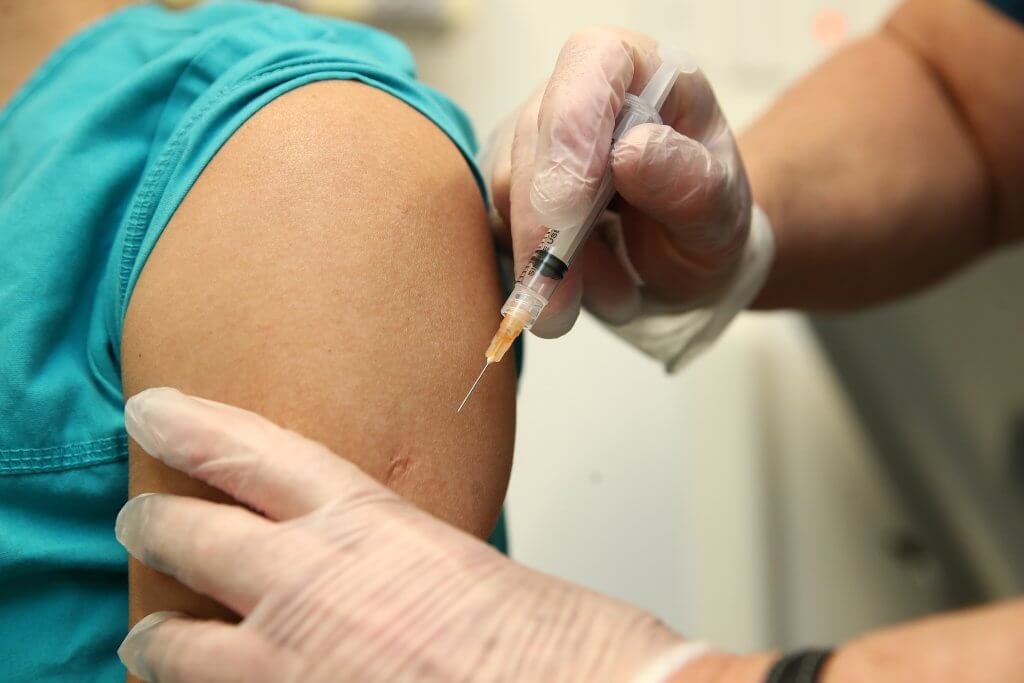CDC Outlines Vaccine Priorities; Md.’s Initial Allocation is a ‘Tiny Fraction’ of What’s Needed

Health care workers and residents of nursing homes and other long-term care facilities would be the first people in the U.S. to receive COVID-19 vaccines under recommendations approved Tuesday by a federal advisory committee.
It will be up to each state to determine how exactly to distribute doses of the vaccines, which could receive expedited federal approval as soon as mid-December. But Tuesday’s recommendation from the Centers for Disease Control and Prevention’s Advisory Committee on Immunization Practices is expected to significantly shape how states allocate their doses.
The priority groups tapped for the initial wave of vaccines encompass some 24 million Americans: 21 million health care workers and 3 million in nursing homes and assisted-living centers.
Those two groups have been hit hard during the coronavirus pandemic. Nationally, there have been 730,000 COVID-19 cases and 100,240 deaths from the virus among long-term care facility residents and staff, according to the CDC. Among health care personnel, there have been at least 243,000 COVID-19 cases and 858 deaths.
“I do feel this prioritization represents strong consideration of the framework of science, implementation, and ethics, and helps to maintain our health care system and protects a very fragile population,” said Dr. Peter Szilagyi, a professor of pediatrics at UCLA and advisory panel member, after Tuesday’s 13-1 vote.
Dr. Helen Keipp Talbot, an associate professor of medicine at Vanderbilt University Medical Center in Nashville, was the sole vote against the recommendation. She had expressed concerns that including nursing home residents in the initial phase could undermine public confidence when residents who receive the vaccine die of other causes.
Federal health officials are projecting that enough doses will be available by the end of December to vaccinate 20 million people, once a vaccine is approved. The leading vaccines require two doses for each person, administered several weeks apart.
States will receive doses based on the number of adults living within their borders, rather than dividing those shots based on the number of infections in a state or the number of individuals in the initial groups prioritized for the vaccine, Health and Human Services Secretary Alex Azar said last month.
At a Tuesday press conference, Gov. Lawrence J. Hogan Jr. (R) said that Maryland is slated to receive 155,000 vaccines in a first round of distribution.
That amount will cover only about half of the state’s frontline health care workers, and an even smaller portion of those Marylanders identified as priority recipients during Phase 1 of a state vaccination plan.
“That’s a tiny fraction of what we need,” Hogan said. “…And so we have very difficult decisions … about the implementation and rollout of that plan.”
Other groups prioritized for vaccination in Phase 1 of the Maryland plan include staff and residents of nursing homes and long-term care facilities, as well as essential workers in public safety, education and other industries.
Like testing last spring, Hogan said he expects that vaccine distribution may have “a little bit of a slow takeoff,” though he estimated that vaccines will arrive in Maryland “relatively fast.”
As vaccine production ramps up and shots remain limited, there may need to be additional prioritization within the groups identified by the CDC.
During the initial period when there are limited doses, CDC’s Dr. Sara Oliver said among health care personnel, individuals who handle infectious materials should be prioritized, as well as those working in long-term care facilities, and those without a known infection in the past 90 days.
Oliver noted that women make up 75% of the health care workforce, adding that an estimated 330,000 health care workers could be pregnant or have recently given birth as the vaccine rollout begins.
Infections of COVID-19 have been found to increase the risk of complications during pregnancy, but the vaccine safety studies so far have not included pregnant and breastfeeding women, offering little data on the potential risks for those individuals.
Among long-term care residents, the advisory group recommended first giving shots to medically vulnerable residents in skilled nursing facilities.
Nearly all of those facilities across the country have enrolled in a federal partnership with CVS and Walgreens to help administer vaccines to nursing home residents.
However, there will be obstacles in maintaining vaccination rates in those facilities as residents are discharged and new individuals arrive. There also will need to be support for those leaving nursing homes, to ensure they’re able to get a second dose when shots are not readily available in the broader community.
“It will be a challenge in the early months,” said Dr. Kathleen Dooling, a CDC medical officer.
Tuesday’s vote only addressed what’s known as “phase 1a” of the vaccine rollout. But the advisory group has signaled that the next stages are likely to include essential workers not in the health care industry (phase 1b), and then people older than 65 and those with underlying health conditions (phase 1c).
Two vaccine manufacturers have applied to the Food and Drug Administration, seeking to have their coronavirus vaccine approved for emergency use. U.S. drug maker Pfizer and its German partner, BioNTech, have said their study found the shot to be 95 percent effective, and U.S. biotech company Moderna said its vaccine was 94 percent effective.
Maryland Matters reporter Danielle E. Gaines contributed to this report.




 Creative Commons Attribution
Creative Commons Attribution